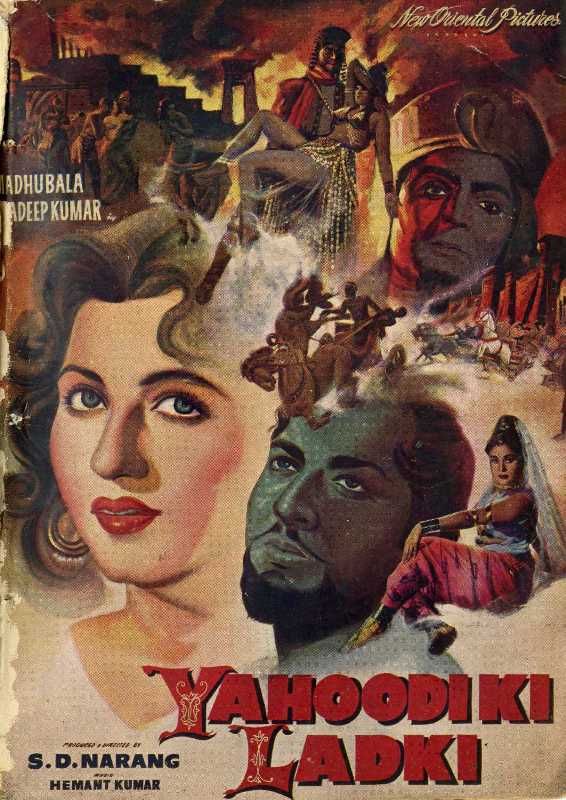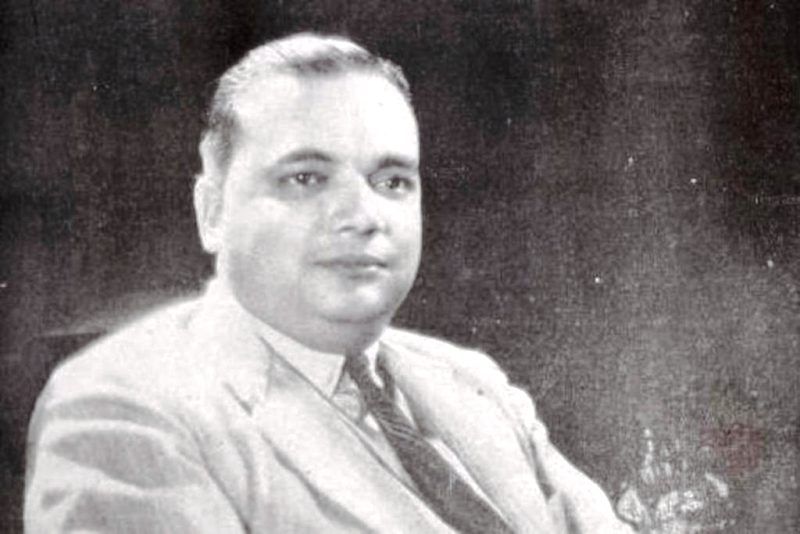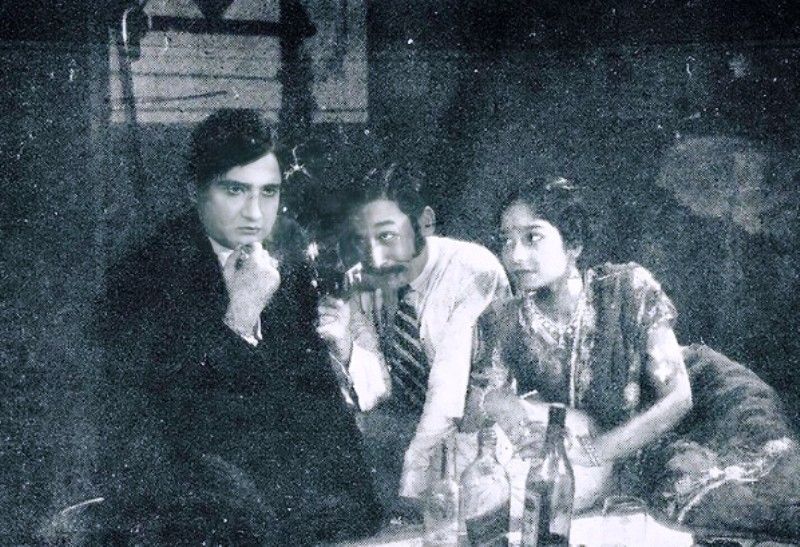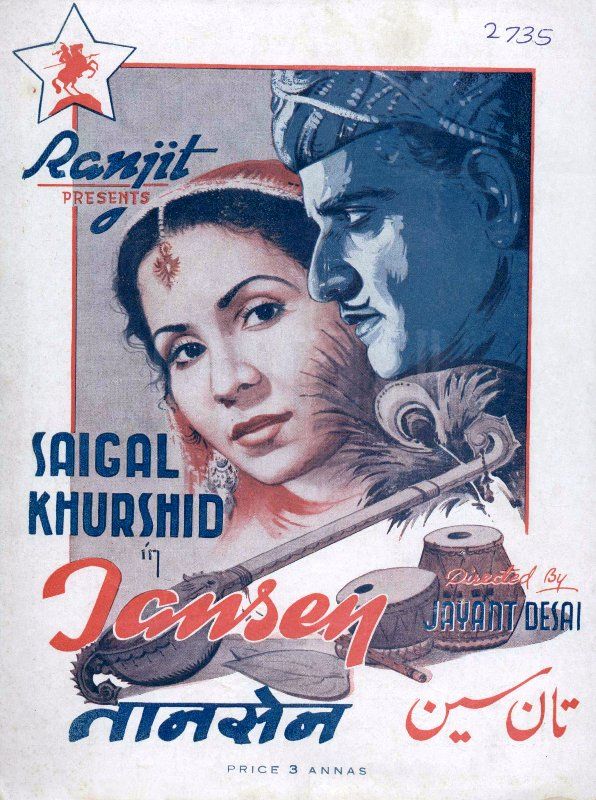Kundan Lal Saigal (1904-1947) was an Indian actor and singer. He is considered the first superstar of the Hindi Film Industry. He was hailed as “Shahenshah-e-Mausiqi” (Emperor of Music) and acclaimed as ‘Ghazal King.’ The status he achieved in singing was a result of informal learning only. ‘Devdas,’ released in 1936 was the landmark film in his career, which gave him an iconic status. He sang in 6 different languages. In a short span of 15 years of his career, he worked in 36 films and sang 185 songs in different languages.
Contents
Wiki/Biography
Kundan Lal Saigal was born on Monday, 11 April 1904 (age 42 years; at the time of death) in Jammu, the Princely State of Kashmir and Jammu, British India (now Jammu, India). His zodiac sign is Aries. He took elementary education from Jammu and then enrolled at Prince of Wales College (Currently known as Gandhi Memorial Science College), Jammu, Jammu and Kashmir, India, but he discontinued the study because of his inclination towards music and singing. Kundan’s mother was very fond of music, and he used to accompany her at religious functions, where he learned the skill of singing and refined it through practice. He became a disciple of Ustad Fayyaz Khan for a few years. He died in 1947 in Jalandhar, Punjab, India.
Physical Appearance
Height (approx.): 5′ 9″
Weight (approx.): 70 kg
Hair Colour: Black
Eye Colour: Black
Family
Kundan belonged to a Punjabi family in the Jammu region.
Parents & Siblings
Kundan’s father, Amarchand Saigal, was a Tehsildar in Maharaja Pratap Singh’s court. His mother’s name was Kesarbai Saigal. He had 4 siblings, 3 brothers, Ram Lal, Hazari Lal, and Mohendar Lal, and a sister.
Wife & Children
Kundan got married to Asha Rani in 1935. Together they had 3 children, two daughters, Nina, and Bina, and a son, Madan Mohan. He adopted Durgesh Nandini, the daughter of his elder brother who died at a young age. Kundan adopted Durgesh while he was single.
Signature/Autograph
Career
Singer
In the early 1930s, classical musician Harishchandra Bali brought Saigal to Calcutta. Saigal moved to Calcutta with his friend Mehrchand Jain, where he recorded several discs of Punjabi songs written and arranged by Harishchandra Bali. These songs were released through the Indian Gramophone Company. ‘Yahudi Ki Ladki’ was the first film of New Theatres in which Saigal lent his voice. He sang ‘Nuktacheen Hai Ghame-Dil,’ a ghazal of Ghalib and a few other songs, which made this film a hit.
In the same year, another film, ‘Puran Bhagat,’ was released. In this, Saigal sang four bhajans, which created a sensation all over the country and made him a star. In 1935, he lent his voice to the songs written by Rabindranath Tagore such as ‘Ek Tuku Chhoa Laage,’ and ‘Tomar Binaye Gaan Chhilo Aar Aamar.’ In 1937, he sang the song ‘Ek Bangla Bane Nyara’ in the film ‘President’, which became popular all over the country and brought him recognition in each household.
In such a short span of his career, he sang 185 songs of which 142 were film songs, and 43 non-film songs. He sang in Hindi, Bangla, Tamil, Punjabi, Pashto, and Persian languages.
Actor
In Calcutta, Saigal met R.C. Boral who hired him for New Theatres Ltd Calcutta, a film studio owned by B.N. Sircar. In 1932, ‘Mohabbat Ke Ansu,’ the debut film of Saigal was released; Prmankur Atorthy directed it. In the same year, he appeared in two more films, Zinda Laash, and Subah Ka Sitara. In these three films, his name appeared in credits as Saigal Kashmiri.
In 1933, ‘Yahudi Ki Ladki’ was released. He used his name KL Saigal in this film.
In the following years, several films such as ‘Rajrani Meera,’ ‘Dulari Bibi,’ ‘Daku Mansoor,’ and ‘Mohabbat Ki Kasauti’ got released. In 1934, ‘Chandidas’ came which earned him applause from everywhere. In 1935, he appeared in ‘Devdas’ in the lead role. This was the turning point of his life. He became popular throughout the country and established himself as the most sought-after actor-singer.
By then, he had started learning Bengali, and he later appeared in several Bengali films such as ‘Sathi,’ ‘Jiban Maran,’ ‘Deshar Mati,’ and ‘Parichay,’ all produced by the New Theatres. In 1938, the New Theatre production produced ‘Street Singer.’ The Bengali version of this movie was made with the title ‘Sathi’ in the same year.
By 1941, Bombay had become the centre of filmmaking in India, and Saigal also shifted to the millennium city. By this time, he had already become a star. He later appeared in many films such as ‘Tansen,’ ‘Dushman,’ ‘Lagan,’ ‘My Sister,’ and ‘Shahjehan.’
His last film, ‘Parwana,’ was released in February 1947, after a month of his death. In such a short span, he worked in 36 feature films of which 28 are Hindi language films, 7 are Bangla language films, and 1 is a Tamil language film.
Car Collection
He owned an M G Saloon.
Salary/Income
- He received Rs 80 per month when he was working as a salesman at Remington Typewriter Co. His grandson Sumant Batra revealed the fact in an interview. [1]Cinemaazi
- He joined New Theatres Ltd Calcutta in 1931, where he was receiving a salary of Rs 200 per month.
- In 1941, he moved to Bombay, where he received a salary of Rs 1800 per month.
- He received Rs 1 lac from Ranjit Movietone Film Studio, Mumbai, for three films (Bhakta Surdas, Bhanwara). [2]The Wire
Death
Alcoholism was gripping Saigal day by day. In his last years, he was unable to record a song without taking a drink. As the impact of this, his health deteriorated, and he died at the young age of 42 on 18 January 1947 in Jalandhar, Punjab, India.
Favourite
- Singer: Faiyaaz Khan, Pankaj Mullick, Pahari Sanyal
- Actress: Khursheed
- Lyricist: Kidar Sharma
- Director: RC Boral
Facts/Trivia
- Amrish Puri was a cousin of Kundan Lal Saigal.
- Lata Mangeshkar was very influenced by Saigal. After Saigal’s death, Lata Mangeshkar wanted to keep his harmonium with her but Saigal’s daughter gave her a ring that belonged to Saigal. In her biography, ‘Lata Mangeshkar: In Her Own Voice’, she revealed,
Since I was a child, I had always wanted to meet Saigal sahib. When I was very young I would say: When I grow up, I’ll marry Saigal. Jokingly my father would reply: By that time he will be an old man. I would say: Never mind I’ll still marry him.” [3]The Economic Times
- Amrish Puri’s elder brother, Chaman Puri, worked with KL Saigal in the film Street Singer.
- KL Saigal did many jobs before becoming a singer. Earlier he was a timekeeper in Railways, then he worked as a salesman at Remington Typewriter Co. For some time, he worked as a hotel manager while he was in Calcutta.
- Saigal’s style of singing was idolised by many independence-era playback singers such as Kishore Kumar, Mohammad Rafi, Lata Mangeshkar, and Mukesh.
- Kundan Lal Saigal used to sing and act in Ramlila in his childhood.
- Saigal loved to cook food. Whenever he cooked Mughlai meat dish, he would take it to the studio and feed it to his friends
- He was the first non-Bengali singer whom Rabindranath Tagore allowed to sing a song based on Rabindra Sangeet.
- Various singers contemporary to Saigal confirmed that KL Saigal’s greatest quality was that the musicians would tune their instruments on his alaap. Typically, a taanpura would be first set to ‘Sa’ or ‘Ma’ by an ustad and then the singer would match his/her tone or scale with it. But when it came to Saigal, the studio musicians would wait for him to arrive, they would ask him to give an alaap, and then all would tune their respective instruments with him. He was treated equally to ‘Shiv Ka Naad’
- Many prominent awards have been named after K.L. Saigal including KL Saigal Lifetime Achievement Award; Lata Mangeshkar and her brother Hridaynath Mangeshkar were honoured with KL Saigal Lifetime Achievement Award in November 2011. [4]Indian Express
- Indian Department of Post released a postal stamp on 4 April 1995 to pay tribute to KL Saigal. Its denomination was 500 paisa.
- On his 114th birth anniversary in 2018, Google paid tribute to him by making a doodle.
- In the last days of his life, K.L. Saigal was gripped in the habit of chainsmoking and alcoholism. He couldn’t even sing a song without drinking 2-3 pegs of alcohol. [5]Amar Ujala

References
| ↑1 | Cinemaazi |
|---|---|
| ↑2 | The Wire |
| ↑3 | The Economic Times |
| ↑4 | Indian Express |
| ↑5 | Amar Ujala |






























